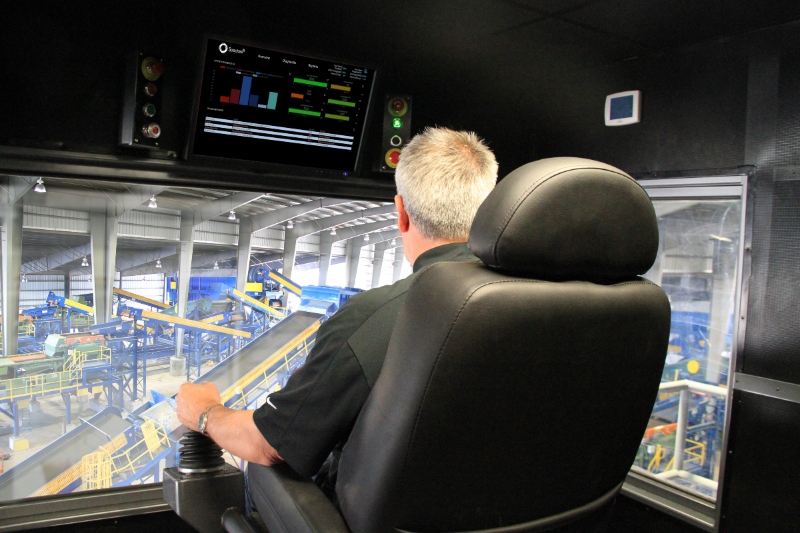Are you ready to level up your facility’s efficiency game? Say goodbye to manual monitoring and hello to a new era of efficiency with AI-based process optimization. By using tools like the Spectare® Intelligent Platform, you can ensure your facility is running at its best with real-time updates and an internet of things network.
Not only can process optimization help you achieve optimal efficiency, but it can also be a highly profitable investment if done correctly. However, there are a few key steps you need to follow to ensure a successful integration process.
Step 1: Collect and Analyze Data
The first step towards implementing process optimization is to collect and analyze data. For machine learning algorithms to produce optimizing models, they require a significant amount of data from the systems they will be monitoring. Therefore, it’s essential to provide high-quality data inputs to give your process optimization models the best information possible.
Data collection is a beneficial time for facility managers as it can help identify risks and issues in the system and plan maintenance accordingly. Real-time data collection is critical in manufacturing to identify risks using time series provided by sensor data, leading to process improvements. However, collecting high-quality data can be challenging.
One of the main issues in the collection process is low-quality data provided by faulty or poorly placed sensors. As machine learning algorithms are only as good as the data they process, it’s crucial to collect the necessary data through appropriately placed and calibrated sensors. Therefore, industrial operations managers should ensure that all relevant inputs are utilized to provide high-quality data.
Step 2: Implement Performance Monitoring
The second step towards implementing process optimization is to implement performance monitoring. As high-quality data is collected, performance monitoring can begin to track the processes in your facility. This process utilizes real-time data flow collected by sensors, analyzed through machine learning algorithms with parameters set according to industrial standards and production quotas.
Real-time performance monitoring is considered the next great leap in the industrial age, known as Industry 4.0. By implementing performance monitoring, manufacturers can create highly automated systems with optimized results. With the help of automated factories that run on real-time data and AI-based performance monitoring, companies can transition their manufacturing processes into the Industry 4.0 age.
performance monitoring is a crucial step towards achieving optimal efficiency in your facility. By continuously monitoring your systems, you can detect any issues before they become critical, thereby preventing downtime and reducing maintenance costs. Additionally, performance monitoring can help identify opportunities for process improvements, leading to increased efficiency and profitability.
Step 3: Use Predictive Maintenance
The third step towards achieving optimal efficiency in your facility is to use predictive maintenance. By using data to predict when components of your industrial system will require maintenance, you can optimize maintenance schedules, minimizing downtime and increasing profitability.
Predictive maintenance practices are commonly used in many industries, from automotive to petroleum. For example, Shell Plc, a multinational petroleum company, improved cost efficiency and safety for their drilling crews by predicting potential failures in their equipment through predictive maintenance.
Machine learning algorithms generate predictive models based on data collected from different sources throughout the entire system. By adopting predictive maintenance practices, operations managers can stay one step ahead of their facility’s maintenance needs, creating a smart factory that operates efficiently and safely. This approach helps minimize downtime and increase profitability for your facility, ultimately leading to improved production efficiency and reduced maintenance costs.
Step 4: Implement Process Optimization
The final step in achieving optimal efficiency in your facility is to implement your process optimization system. This requires a holistic approach to monitoring and predictive practices, known as a total systems approach. Optimization software like the Spectare® Platform is one example of a total systems approach that allows facilities to monitor their process optimization and adjust their parameters accordingly.
Process optimization is a discipline that can be applied to many industrial processes beyond mechanical manufacturing. For instance, utility optimization and energy load optimization can be accomplished through the same discipline. Novozymes, a biotech company, successfully used advanced analytics and machine learning to identify and address inefficiencies in their multi-stage purification processes. By adopting machine learning-based process optimization, their facility reduced lead times by 30%, resulting in increased productivity.
Conclusion
Process optimization is a powerful tool that can be applied to various industrial processes, leading to increased profitability and success. By following these four implementation steps, you can achieve optimal efficiency in your facility and take your operations to the next level.
But why settle for just any old platform? At ISS, we’ve developed the Spectare® Intelligent Platform–the one-stop-shop for all your process optimization needs! Our platform runs on real-time data and uses AI-based methods to help your team make the best decisions based on data and prediction models.
Don’t waste another minute with manual monitoring and outdated methods. Contact our team today to see how Spectare® can save your facility time and money through advanced process optimization. Trust us, your operations will thank you.


